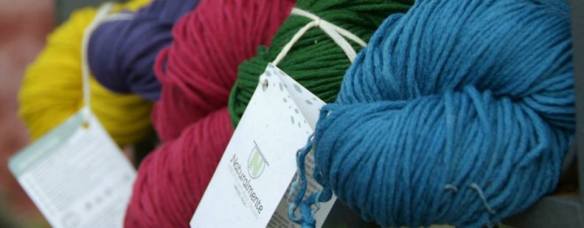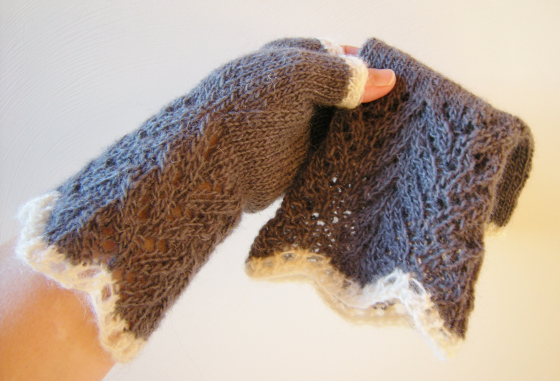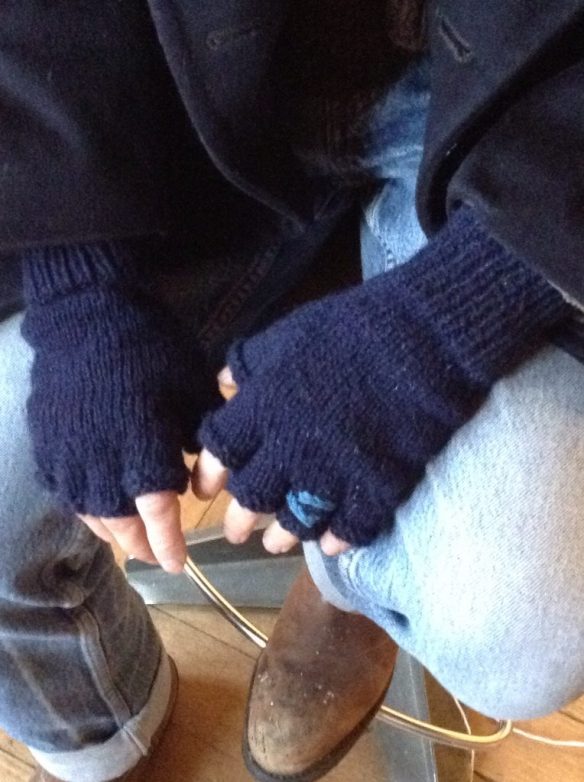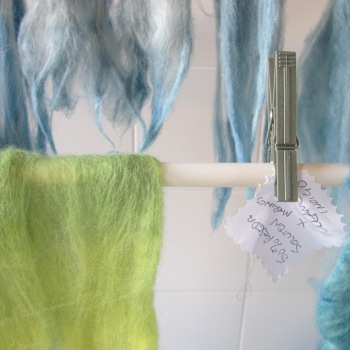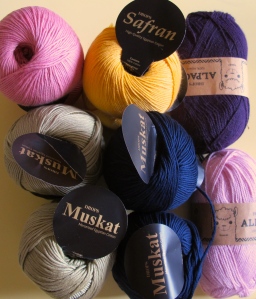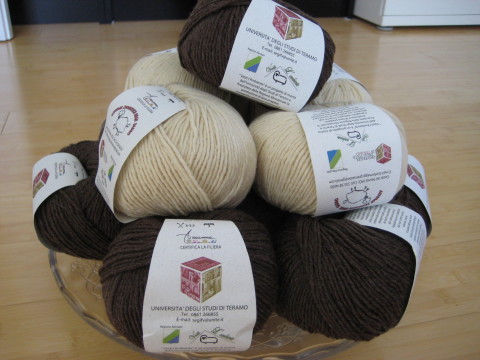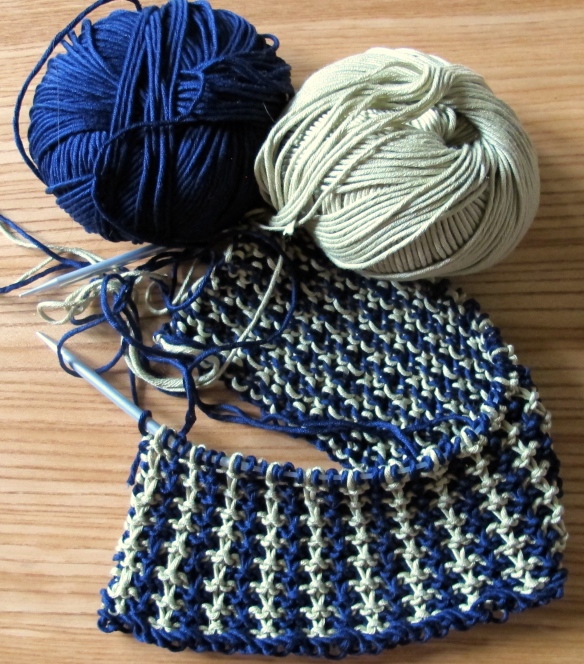Three Winter Whites! Let’s begin with Brogna.
It’s long past Spring but, I still have white on my mind. As I mentioned in the last posts, Winter White is rarely a true white. The whites that I’m looking forward to getting my needles into come from 4 different sheep breeds from 3 different countries but they all have one thing in common: they are made into yarn here in Italy. Although I’m calling these three ‘winter whites’ – they really belong to spring, the Italian shearing season which normally starts in April can continue through July. My first white is a beautiful creamy Brogna from the hills surrounding the city of romance, Verona.
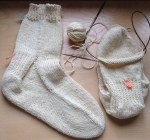
A pair of socks from “Dave’s Toe-Up Sock Cookbook” made with Brogna…che belle!
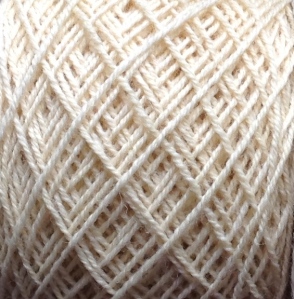
Soft and delicate, this Brogna yarn is a buttery straw color and plied in a special way to create a texture like that of a fine gold chain.
Brogna is one of the forty-two autochthonous Italian breeds and in the 1980’s it was near extinction with only 50 head registered but now there are more than 1700 purebred Brogna Sheep currently registered in Italy. This wool was renowned in the Middle Ages for its use in fine Verona Woolens and I love the buttery/straw color and the way it takes dye!
Bright Lights shining from Southern England to Northern Italy
Next up: Lowland wool from Southern England, spun with care in Northern Italy, “Bright” is a smooth yarn that’s only slightly thicker than Jamison’s Heritage Shetland and a bit smoother and stronger. The white has a lovely sheen and is in fact ‘bright’ without looking bleached. This quality comes in quite a few colors (and I have quite few of them in my stash) so, having swatched for solid stockinette gauge, I’m now looking forward to knitting
some colorwork swatches with Bright, using the white as a base color. I’m wavering between Kate Davies elegant “Epistrophy” and Tin Can Knits’ geometric fair isle “Clayoquot Cardigan“…humm, both so beautiful!
Organic Poll Dorset: From France to Italy and back again
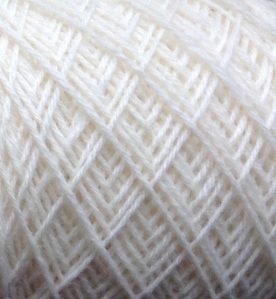
This soft, wooly, organic Poll Dorset from Renaissance Dyeing is from sheep bred and sheared in France. The wool is then spun in Northern Italy’s renowned woolen mills.
No mater if it’s ‘bare white’ or dyed with lush natural dyes – this organic wool is worth every penny of the extra cost. Not only that, for anyone concerned about how sheep are handled during the shearing process, this is probably the happiest wool you’ll ever handle! At only 9 euro per for an undyed, 3.53 oz, 380 yard skein, you can afford to try your own dye experiments – then you’ll understand that the natural, stable color line offered by the company is a bargain at 17.50/skein! I’m hoping to use my 3 skeins of white as the base for a transitional sweater with a bit of color…maybe Paper Dolls? Tired of white? My upcoming post will be all about color….meanwhile, Happy Woolworking!


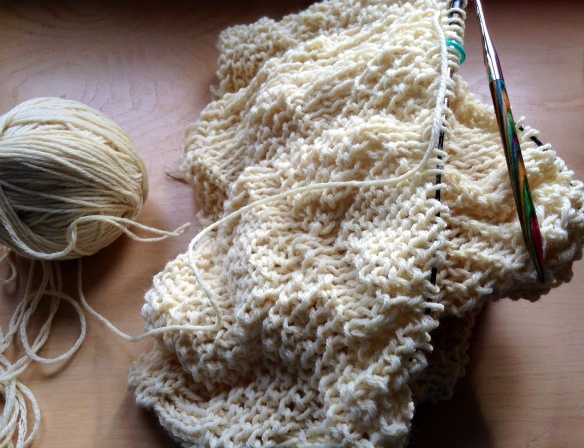
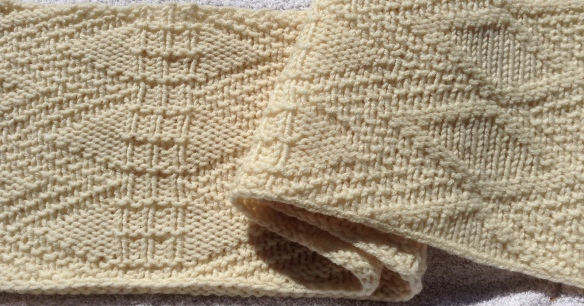
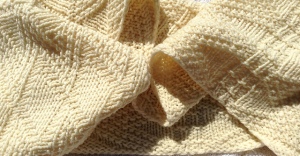
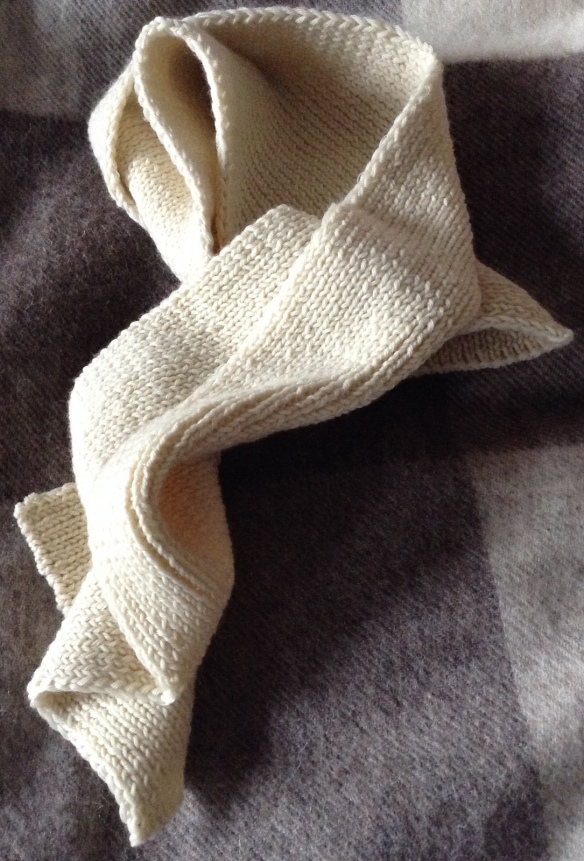
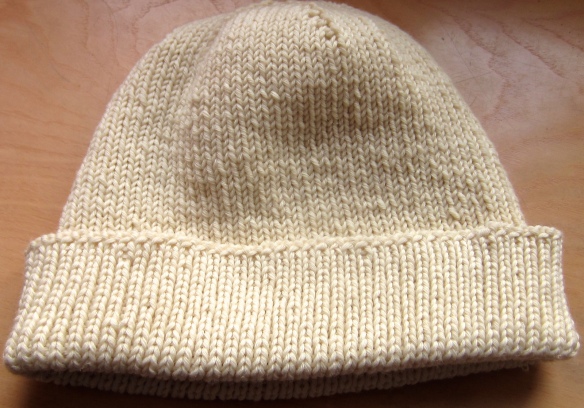
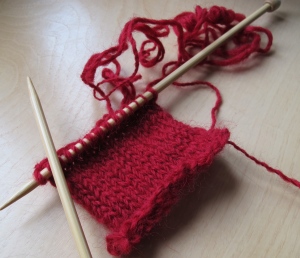
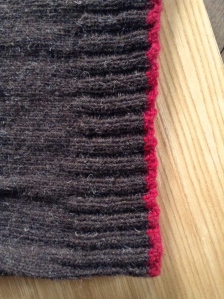
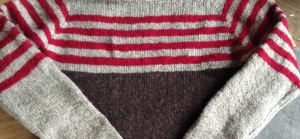
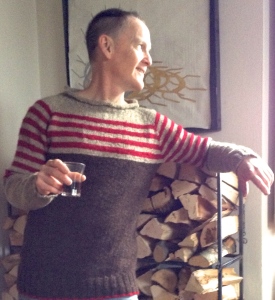
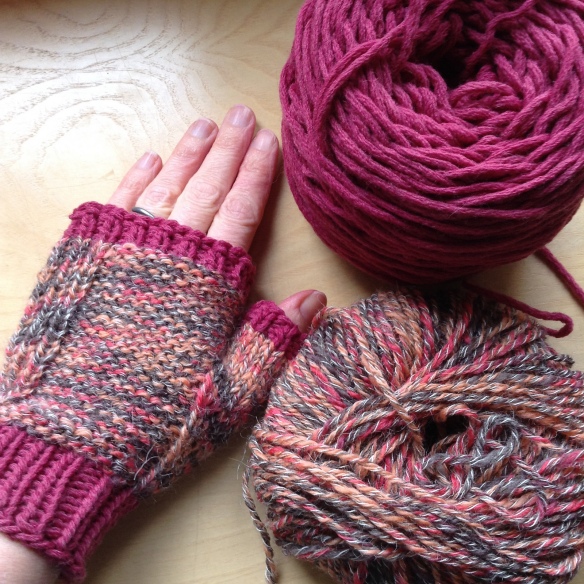
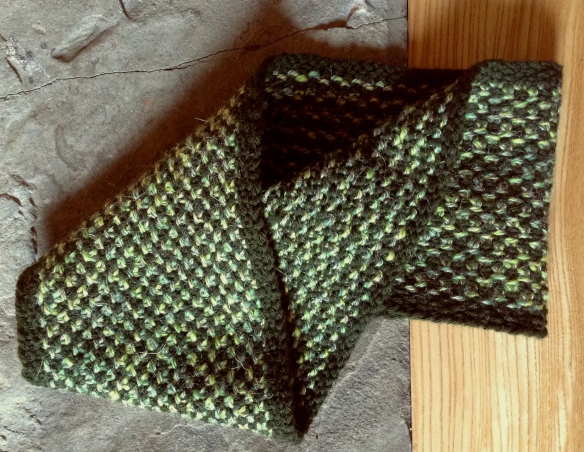
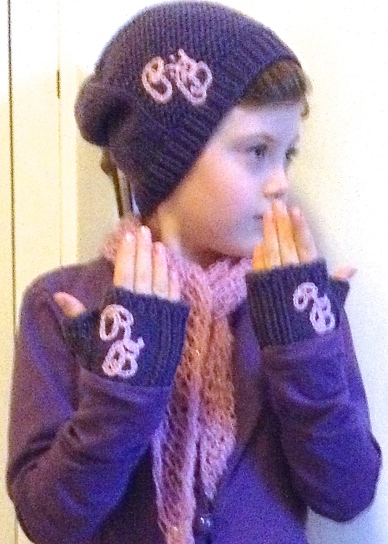 Sasso National Park in Abruzzo. Beautiful Abruzzo Wool is something I knew nothing about until I came to the North of Italy. This wool, a sumptuous aran weight worsted, is not only 100% Italian in it’s production, it’s also dyed with natural, oxidized logwood to this luscious shade of plum! The stitch definition is amazing and
Sasso National Park in Abruzzo. Beautiful Abruzzo Wool is something I knew nothing about until I came to the North of Italy. This wool, a sumptuous aran weight worsted, is not only 100% Italian in it’s production, it’s also dyed with natural, oxidized logwood to this luscious shade of plum! The stitch definition is amazing and 